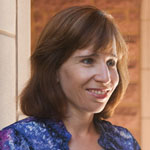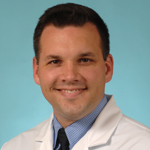Cancer is the second leading cause of death among children ages 1-14 and will affect over 12,000 families in the United States this year alone.
To increase awareness, September has been, since 2009, Childhood Cancer Awareness Month with Wednesday, Sept. 12, designated as Childhood Cancer Awareness Day.
Although cancer is relatively unusual in children compared to adults, childhood cancer rates have been increasing since the 1970s for reasons that are largely unknown.

“Cancer in children compared to adults is very different,” says childhood cancer epidemiologist Kimberly J. Johnson, PhD, assistant professor at the Brown School at Washington University in St. Louis. “Kids get different kinds of cancer than adults and, other than radiation exposure and certain inherited mutations, we still don’t have a good understanding of what causes cancer in children.”
Johnson’s research centers on individuals with Neurofibromatosis Type 1, a genetic syndrome that causes a strong susceptibility to pediatric brain tumors. The research hopefully will provide new leads on environmental and genetic factors that increase risk for brain tumors in kids with and without syndromes. Johnson also has studied how folic acid fortification of certain foods affects childhood cancer incidence. The research suggested that folic acid may reduce the incidences of kidney cancer and some brain tumors.

Todd Druley, MD, PhD, pediatric oncologist and assistant professor of pediatrics at Washington University School of Medicine in St. Louis, also is conducting research to understand causes of childhood leukemia, the most common cancer in children.
“Not only are the cancers different in children, but the mechanism that causes them seems to be different from adults,” Druley says.
“Washington University is a world leader in genomic technologies, and we are using these tools to gain new insights into the precise genetics involved in the formation and treatment of leukemia in infants and children.”
Although the causes of childhood cancer remain obscure, a majority of kids diagnosed with cancer can be cured of their disease due to a combination of chemotherapy, surgery and/or radiation.
However, research shows that the cure is not without cost. Long-term childhood cancer survivors often have chronic health conditions such as abnormal thyroid function, delayed sexual maturation, infertility, and learning disabilities among others, requiring careful monitoring for years after cancer treatment ends.
Further, cure rates have generally plateaued since bone marrow transplant became common in the early 1990’s, suggesting that there are important biological differences about these cancers that are still unknown.